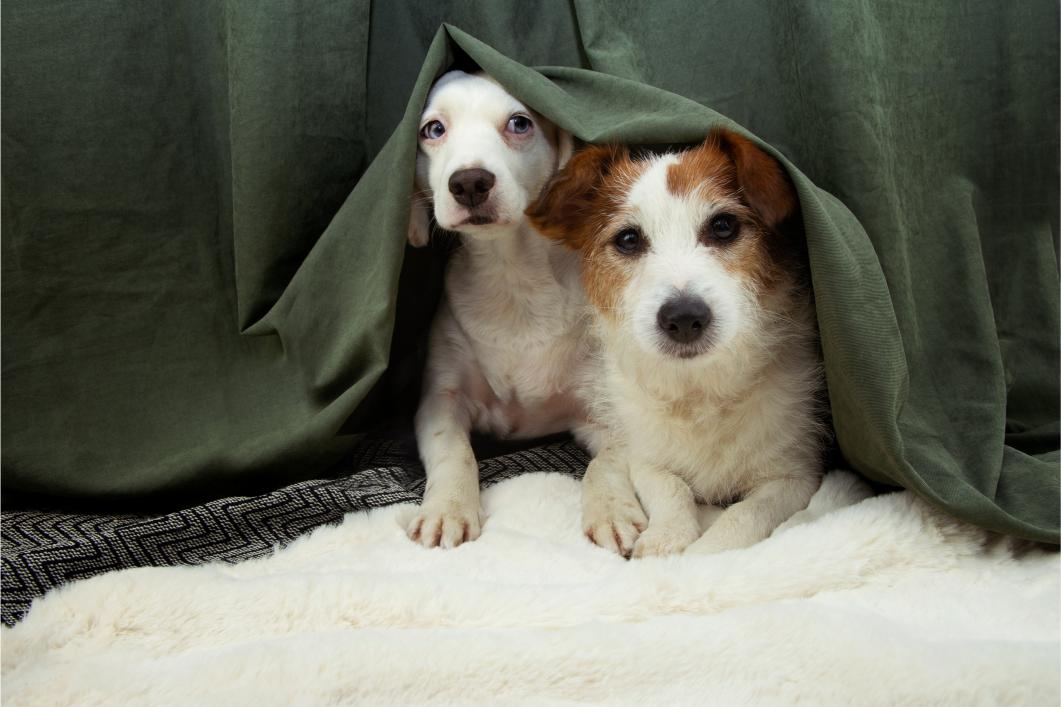
Summer storms, with their sudden changes in atmosphere, thunder, lightning, and heavy rain, can significantly impact our pets. Dogs and cats, in particular, are often highly sensitive to environmental changes, so if your cat or dog hides when the thunder rolls, you’ve come to the right place. Please keep reading for valuable tips from our team on how to recognize and alleviate the effects of weather on pets.
How Thunderstorms Affect Pets
Storm stress in dogs and cats is fairly common, with an estimated 30-40% of dogs and 20-30% of cats exhibiting some form of storm-related anxiety. The effects of weather on pets can also vary over the animal’s lifetime. A puppy or kitten hearing a storm for the first time, for example, may be quite scared. Senior pets can be particularly sensitive to environmental changes, and may experience heightened anxiety during storms.
Here are some typical signs of pet anxiety during storms:
- Dogs and cats might pant excessively or drool more than usual.
- Pets may seek out hiding spots, attempting to find a safe and quiet place away from the storm.
- Vocalizations such as whining in dogs or excessive meowing in cats can indicate anxiety.
- Restless movement, such as pacing back and forth, is a common sign of stress.
- Some pets might engage in destructive activities, like chewing or scratching furniture.
- Visible signs of physical distress include shaking or trembling.
How to Alleviate Storm Stress in Dogs and Cats
Managing pet anxiety during storms involves creating a calm and secure environment, providing distractions, and sometimes using specific products designed to soothe anxious animals. Consider the following strategies:
- Safe Space: Create a safe, quiet space where your pet can retreat during the storm. This could be a particular room or a comforting enclosure.
- Calm Environment: Maintain a calm atmosphere around your pet. Avoid sudden movements or loud noises that could add to their stress.
- Distractions: Use toys, treats, or interactive games to distract your pet from the storm.
- Comforting Presence: Sit with your pet or hold them if they seek comfort. Your presence can be very reassuring.
- Sound Therapy: Play soothing music or use white noise machines to mask the sounds of the storm.
- Thundershirts: These specially designed garments apply gentle pressure, which can help calm an anxious pet.
- Pheromone Products: Products like calming sprays or diffusers can help reduce anxiety by mimicking calming scents.
- Consult a Veterinarian: If your pet’s anxiety is severe, consult a veterinarian. They may prescribe medication or suggest other treatments to help manage stress.
Summer Storms and Pets: We’ve Got You Covered
Understanding how thunderstorms affect pets and recognizing signs of anxiety are crucial for providing necessary comfort and care. Please contact us for more insights on storm stress in dogs and cats, or if it’s time for your pet’s checkup.

